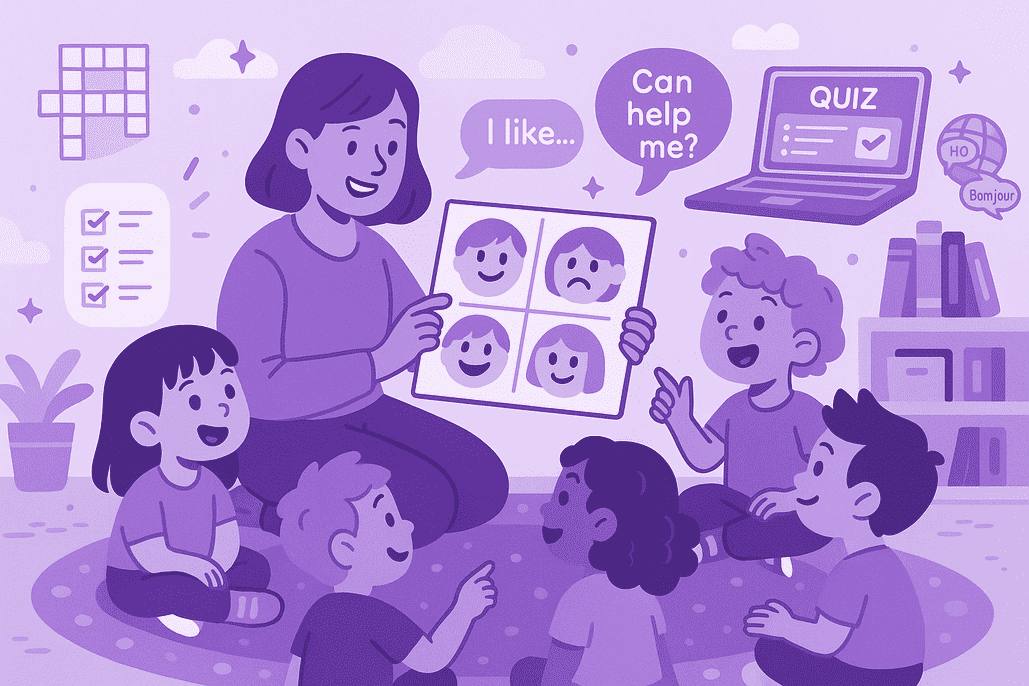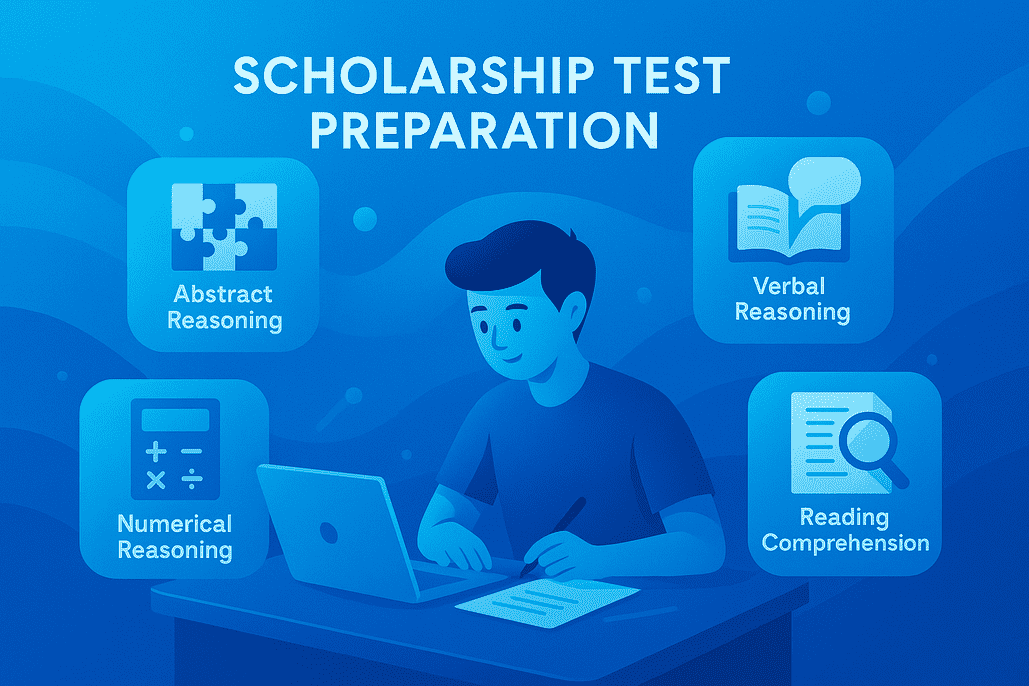When we talk to teachers and parents, one thing always comes up: the struggle of finding or creating truly syllabus-aligned resources. You’ve probably felt it yourself. You sit down at the end of a long day, open your laptop, and think, “I just need a simple lesson plan that matches the Australian Curriculum Version 9.” Instead, you spend hours drafting worksheets, searching for quizzes, or piecing together crosswords. It stretches into evenings and weekends, leaving you exhausted before you even deliver the lesson.
We know this feeling all too well, and you might be nodding along right now. Parents supporting their children at home face a similar problem. You want to help, but where do you start? How do you know if the material is aligned, or whether it even matches the codes your child is expected to meet?
The Hidden Strain of Keeping Up
Even when you find something that looks useful, the ground keeps shifting. Version 9 of the AustralianCurriculum has updated expectations, and older lesson packs may not align with these new expectations. That means teachers and parents are left cross-checking outcomes like AC9EFLA01 or AC9EFLA02 against generic printables. It’s time-consuming, stressful, and frankly, confidence-draining.
You and I both know quality and alignment matter. It’s not enough to hand children busywork. We want resources that align with the curriculum outcomes, not a one-size-fits-all worksheet that someone uploaded years ago. At the same time, engagement is non-negotiable. A plain worksheet won’t keep a five-year-old focused. Children thrive on variety, such as quizzes that provide instant feedback, story boards that allow them to act out emotions, or crosswords that turn vocabulary into a puzzle. Without interactive formats, learning becomes a chore instead of an adventure.
In the Classroom
Think about today’s classrooms or even your own household. Children come with a mix of abilities, languages, and needs. Some are ready to race ahead, while others need scaffolds, repetition, and visual support. As a teacher, you’re juggling inclusion, differentiation, and curriculum alignment all at once. As a parent, you’re just trying to keep your child engaged without tears or tantrums.
Assessment adds another layer of pressure. Teachers want to know which students “got it” and which ones didn’t. Parents want simple ways to track progress at home without complicated logins or expensive systems. And then there’s the cost. Many platforms lock resources behind pricey subscriptions. For small schools or families, this is simply unsustainable. Add to that the constant worry about credibility, the question of whether you should trust a random worksheet from Pinterest, and the frustration grows even bigger. It is the reality we both face, and it is exactly why syllabus-aligned, ready-to-use resources matter so much.
Building Language Skills with AC9EFLA01
Now, let’s bring this back to what children in kindergarten are learning. Under AC9EFLA01, the focus is on language for interacting with others. Children are beginning to understand that language isn’t the same everywhere. At home, they may speak casually with their siblings, but at school, they need to adopt a different tone with teachers.
As a teacher, you can gently acknowledge these differences and model how the same idea sounds differently in various settings. As a parent, you can role-play at the dinner table or in the car—asking your child to practice “shopkeeper talk” or “teacher talk.” These small, playful moments help children notice context, tone, and body language.
Children are also encouraged to ask questions and share opinions politely. In class, you might demonstrate by saying, “Can you help me?” instead of “I want that!” At home, you can practice by pretending your child needs to ask for something politely, like more water or another turn with a toy. These little rehearsals build confidence and respect.
And don’t forget curiosity.When a child wonders aloud, that’s your opening. Questions like, “Why do we use polite words in class?” transform curiosity into learning.At home, during Story time or play, you can spark inquiry with simple prompts like “What do you notice?” or “What might happen next?”
Growing Respect Through Cultural Awareness
As children meet classmates and families from diverse cultural backgrounds, they begin to notice that communication styles vary among individuals. It is a golden opportunity to celebrate diversity. In classrooms, greetings in different languages or discussions about family traditions make children feel included. At home, sharing your own cultural words, stories, or rituals helps children understand that there isn’t just one “right” way to connect.
Children also discover that relationships influence the way they speak. The way they interact with a parent, a friend, or a shopkeeper is different, and role-play activities are ideal for this. In classrooms, you can set up a pretend shop or a family dinner table. At home, you can explain how your words change when you talk to grandparents versus when you speak at work.
And then comes the joy of linguistic diversity. Even a simple “hello” in another language can spark pride in children who are bilingual or open curiosity in those who are not. Teachers can weave this into daily routines, and parents can encourage their child to try new greetings or proudly share their own. Together, these experiences foster respectful and confident communicators.
Developing Emotional Language with AC9EFLA02
Alongside language,Kindergarten children are learning to express feelings under AC9EFLA02. At this stage, they require assistance in transitioning from gestures to words. Instead of just pointing or frowning, we encourage them to say, “I don’t like loud noises,” or “I like building blocks.” At home, when you notice a smile or a frown, you can gently add words to match the body language.
Children also learn to recognise emotions in speech, gestures, and media. Think of how powerful it is when a teacher pauses during a cartoon and asks, “How do you think this character feels?” You can do the same at home after a storybook or a short video clip, sparking conversations about happiness, sadness, or fear.
A strong vocabulary of feelings is a gift. Words like "happy," "sad," "excited,""angry," "scared," or "confused" provide children with tools for navigating daily life. Teachers might use emotion cards or posters, while parents can play “feelings detective” at the park or in the supermarket.
Friendships take on new meaning here, too. Children start to notice inclusion and fairness, and adults can highlight when sharing or kind words make others feel welcome. Role models matter: when you or I model polite phrases like “I feel upset, can I have a turn?” we’re teaching both communication and emotional regulation.
And because actions matter as much as words, children need outlets for showing their feelings. Art, role-playing, or storytelling provide safe ways for them to express themselves. Stories about adventures or emergencies are especially useful because they show how characters feel and why they act the way they do.
Finally, children begin to connect feelings to bodily reactions. A racing heart might signal fear; clenched fists might show anger. By pointing this out, “I see your fists are tight, are you feeling angry?”, we help children link their inner world to their outward signals. Over time, regular chats in class or at home help build confidence in sharing emotions, thoughts, and ideas openly.
Why Syllabus-Aligned Resources Matter
You can see how much is happening in just these two syllabus dot points, language and emotions. Now imagine trying to build lessons, quizzes, and activities for every code inVersion 9, while keeping them engaging, inclusive, and up-to-date. It’s no wonder parents and teachers feel overwhelmed.
That’s why syllabus-aligned resources aren’t just convenient; they’re essential. They save time, reduce stress, and ensure that every lesson you deliver hits the mark. With interactive formats, such as quizzes, crosswords, videos, and storyboards, children remain engaged, teachers save hours of planning, and parents feel confident in supporting their child's learning at home.
NotesEdu’s FREE Syllabus Aligned Resources
By leaning on syllabus-aligned resources, you save yourself time and energy while giving children the best chance to thrive. Together, we can move from endless planning and second-guessing to confident teaching and joyful learning.
NotesEdu has created free, syllabus-aligned packs that cover AC9EFLA01 and 02, as well as everyday teaching moments in kindergarten. In less than a minute, you can download a complete lesson, launch an auto-marked quiz, and access a storyboard that helps children name feelings and share preferences.
Are you ready to turn ideas into real classroom successes? Click below and unlock your free syllabus-aligned pack today.
FREE Foundation Year: Language for Interaction (AC9EFLA01 & AC9EFLA02):
If you need curriculum (syllabus or standard) aligned resources, including lesson plans, practice tests, puzzles, storyboards, courses, worksheets, podcast, presentations and videos, to support student learning, please click the form and provide your details so we can assist you.
Our team can provide high-quality, targeted materials to help teachers enrich their classrooms and parents support learning at home, building strong foundational skills, boosting engagement, and helping students excel with confidence.
















